Exhibitions
- TOP >
- Exhibition >
- Past Exhibitions >
- 2023 >
- Naondo Monumental / Oriental
Naondo Monumental / Oriental
Details
| Title | Naondo Monumental / Oriental |
|---|---|
| Dates | 2023/7/15(Sat)~2023/9/3(Sun) |
| Closed | Mondays (Except for 2023/7/17) and 2023/7/18 |
| Open Hours | 10:00〜18:00(The Museum entrance closes at 5:30PM) |
| Ticket | Adults ¥800(¥600) University students/High school students/Seniors (65 and older) ¥600(¥500) Junior high school students free *( )=Group of 20 or more/Meguro Citizens *Visitors with disability and one person accompanying them are admitted free of charge. (Please present certificate at the admission.) |
| Organized by | Organized by:Meguro Foundation of Art and Culture (Meguro Museum of Art,Tokyo) Supported by:Kitano Foundation of Lifelong Integrated Education Co-curated by: Ueda City Museum of Art |
List of Exhibition Naondo
PDF:2.39MB
NAKAMURA Naondo (1905-1981) was a popular sculptor before WWII, and became well-known when he went to Paris after the war with his paintings by gouache. After returning to Japan, he based his activities at Nika Association, and created many works; sculptures, paintings, and prints. He spent later days of his life at his atelier in Meguro City. The exhibition demonstrates precious works and materials, mainly kept in his birthplace, Ueda City, Nagano Prefecture, so as to closely approach his life.
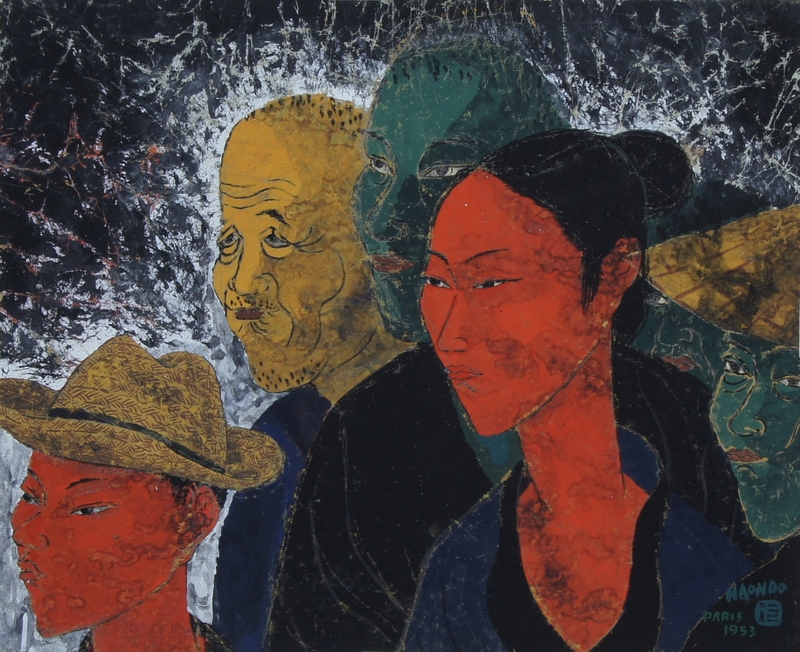
NAKAMURA Naondo,Japonaises People,1950’s, gouache on paper, Kosugi Hoan Museum of Art, Nikko
NAKAMURA Naondo (1905-1981) was born in Chiisagata-gun Kangawa-mura, Nagano Prefecture (currently Ueda-City, Nagano Prefecture). He was an artist who played an active role as a sculptor before the war, and who made a name after the war, as a painter portraying sorrowful females with unique painting methods in Paris. In later years, he set up an atelier in Meguro-Ku, Tokyo, and performed brilliant activities such as receiving the Prime Minister's Award of Nika Association. He has left many of his works in Ueda-City and his unique painting style of his later years remains in the hearts of many people together with the image of Naondo NAKAMURA and his strong personality.
The Exhibition is the joint project between Meguro Museum of Art, Tokyo, and Ueda City Museum of Art, introducing historically the life of NAKAMURA Naondo with his works rich in changes and variety made in his early days, in his Paris days, and in his later days after he returned. The exhibits include the big wooden carving created during the war, and the intensely colored works by gouache (opaque watercolor) painted in the 1950's. We are certain that they will give you profound surprise, especially when you know that he was quoted at the time as "the artist who had established himself as a sculptor in Japan, and who came to conquer 'Paris' as a painter.”
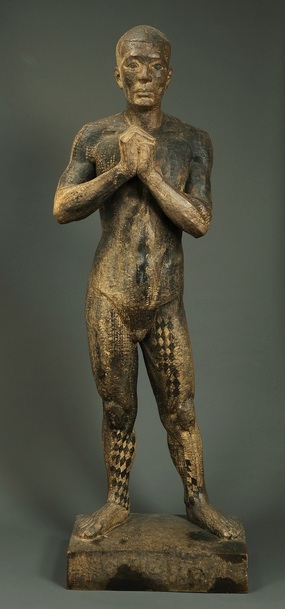
NAKAMURA Naondo,Juggler,1932,wood, painted,Private Collection
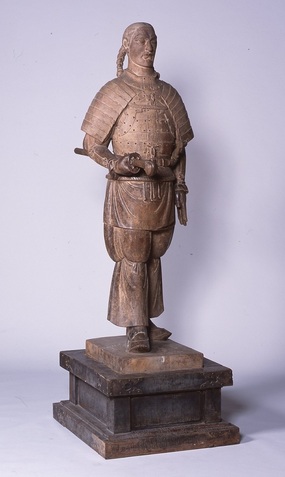
NAKAMURA Naondo,A Sword of Kusanagi(One of three Imperial Regalia of Japan),1941,wood,Shizuoka City Toro Museum
This kind of creative attitude that responds to the needs of the times appears also in his two-dimensional works that he began to work on after he went to France, such as in the use of oriental Buddhistic five colors; green, yellow, red, white, and black, and in three-dimensional expression modeled after the Buddhist sculptures. Perhaps, he was also inspired by the “milky-white skin” depicted by FUJITA Tsuguharu that became very popular in Paris before Naondo arrived there. The gouache works by Naondo is to paint first on yellowish Japanese paper, then to knead that paper to make wrinkles intentionally, which then flakes off the paints. This makes the texture of the picture stand out, which he intended.
Naondo was an artist who rather than holding out his own style, but creating many works like a craftsman reading the trends of the people and of the time. We would be most pleased if this Exhibition gives the viewers an opportunity to look back at the achievements of this rare artist.
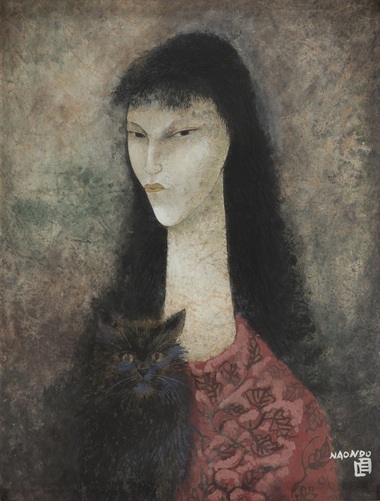
NAKAMURA Naondo,Woman and Cat,1952-1964,gouach on paper,Ueda City Museum of Art
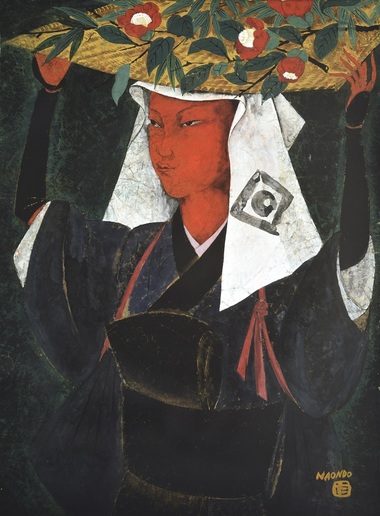
NAKAMURA Naondo,Woman Peddler in Kyoto from Ohara,1956,gouach on paper,Nagano Prefectural Art Museum
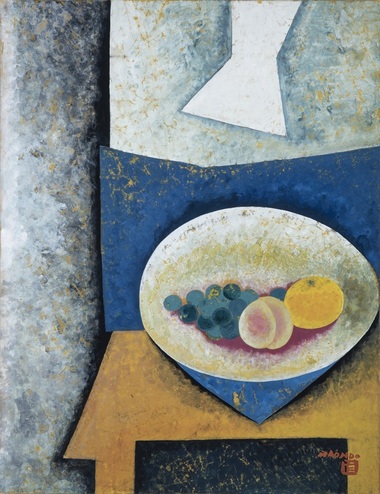
NAKAMURA Naondo,Still Life with a Peach,1963,gouach on paper,Kosugi Hoan Museum of Art, Nikko
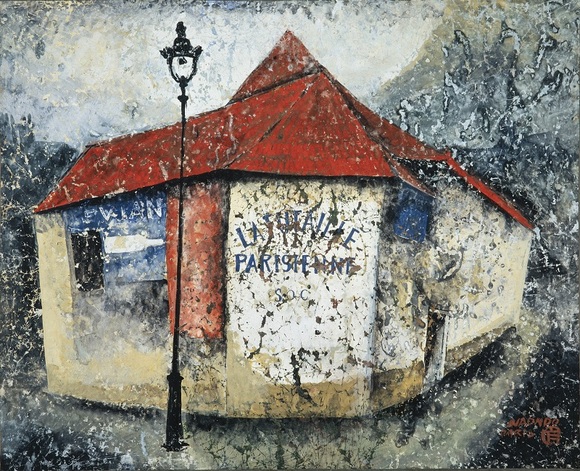
NAKAMURA Naondo,Red House in Paris,1953,gouach on paper,Kosugi Hoan Museum of Art, Nikko
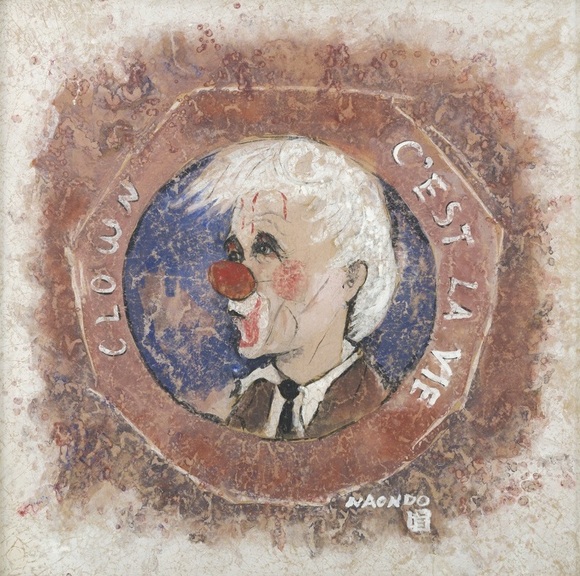
NAKAMURA Naondo,Clown,1960,gouach on paper,Ueda City Museum of Art,Atelier Mori Collection
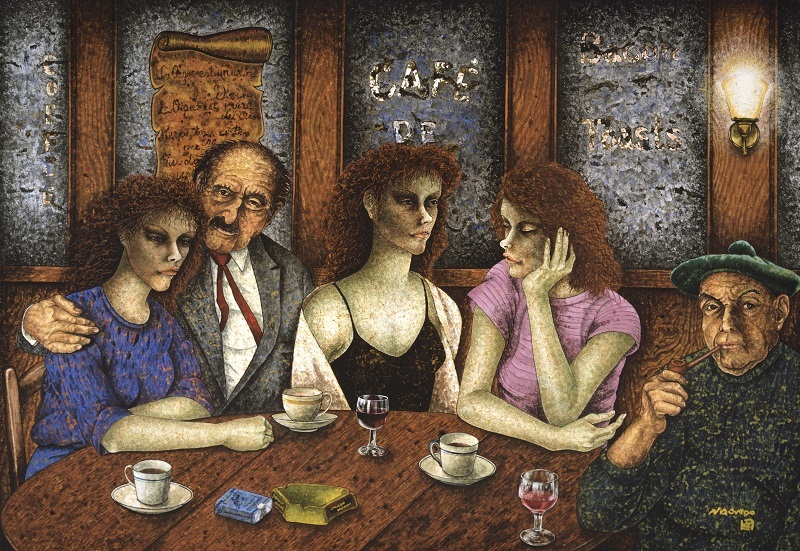
NAKAMURA Naondo,Meeting,1980,gouach on paper,Nagano Prefectural Art Museum

